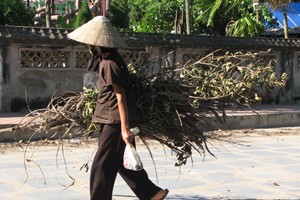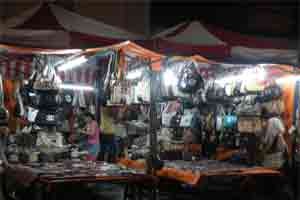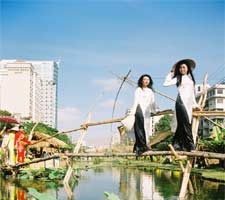It was a rare event, the solar eclipse in 1995. Thousands flocked to witness it in the vantage point of Phan Thiet, the capital city of Binh Thuan Province in southeastern Vietnam. As the celestial drama unfolded and the sun put on a disappearing act, their eyes opened suddenly to an enrapturing scene of white sandy beaches, blue turquoise waters and green trees. From a touristic perspective, Mui Ne has not looked back since.

As we entered the coastal town one late afternoon last week, I understood immediately why people want to visit Mui Ne again and again.
More than 200 kilometers of the beach stretched languidly, gently hugged by the blue waters of the sea.
Round a corner, the beach was suddenly bordered by luxury resorts, hotels and bungalows; and on the other side of the street: cafes, restaurants, bars, beauty salons and laundromats stood ready to serve visitors with a range of culinary experiences from different parts of the world.

We checked into a hotel on Nguyen Dinh Chieu Street. I had a room with a view – a spectacular view of the sun setting on the sea, a bright red plate casting its last rays of the day on the immense, calm ocean which gradually turned from hot orange into a dark reddish purple. This can never happen in a big city, I thought.
We decided to eat out so we could explore the city at night. There were many restaurants offering delicacies from different parts of the world, but we settled for Vietnamese seafood.
After a hearty dinner of cuttlefish, shrimp and oysters, we went out for a stroll around the town glimmering in light emanating from restaurants, hotels and night clubs along both sides of the street. Occasionally, young lovers walked by, hand in hand, nudged ever closer to each other by the fresh sea breeze.

Early morning on the following day, we hopped on rented motorbikes and drove along the seaside, dropping in on a fishing village to watch local fishermen drawing up their nets right on the beach. It seemed to be an unlucky day for them, as their nets were almost empty. A short distance away, the warm sea water had already lured many swimmers and they seemed to share the space with the fishing boats that bobbed out not too far from the people.
We continued our trip, driving past places where the locals dried anchovy, one of the exported specialties of Phan Thiet, on large wooden trays laid side by side along both sides of the street.
The next stop was the famous yellow sand dunes about 20 kilometers east of Phan Thiet. The scene looked like a water-color painting of sandy waves assuming gigantic proportions. The sands seemed to get hotter and brighter in the bright sunlight and clear, blue sky. Little kids ran up and down the dunes to try to sell visitors a ride on their 'sledges' - sheets of plastic.

On our bikes again, we took a newly laid street to Phan Ri, a small town nearby. The scenery on both sides of the street – it is difficult to describe its beauty. On our right was the splendid coast and on the left were sand hills, willow forests, red mountain plateaus, orchards of bon bon (known variously as langsat, lans, duku, lanzon and other names) and cassava fields - a natural masterpiece of sky, earth, sand and colors.
We turned around. The journey had taken us four hours. We were burnt by the scorching sun, but the sense of satisfaction was complete. This was a short trip, but the stage was set for a longer stay the next time around.
























